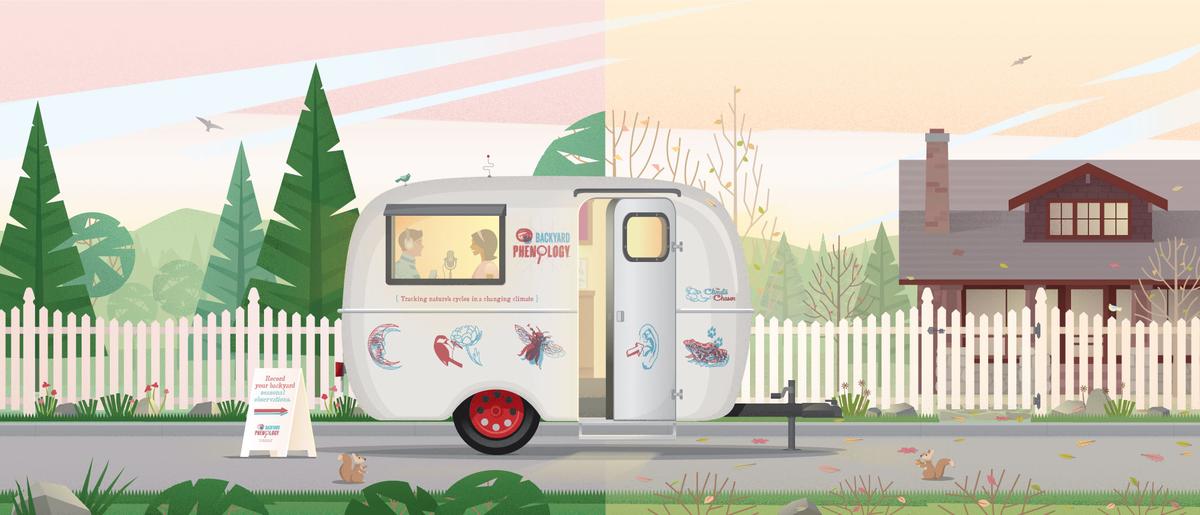Folwell Component

Graphic design by This Is Folly
The Climate Chaser
The story of Backyard Phenology's mobile recording studio
By Sam Graf Backyard Phenology's Program Coordinator
The rusted out shell of the silver Boler trailer parked in a backyard in Minneapolis’s Seward neighborhood has become the catalyst for over 600 interviews discussing how climate and places we live have changed over time. Over the course of a few months, the trailer was transformed into the Climate Chaser, a work of participatory art that bridges the diverse knowledge systems required for sustainable community building. Backyard Phenology debuted Climate Chaser at Northern Spark, a Twin Cities all-night art festival, in 2016 and has since become an integral part of the Collectives community engagement efforts.
The Climate Chaser invites people to explore the connection between storytelling and phenology, both as tools for understanding how the places we live are intrinsically connected to climate. Storytelling is deeply entwined with how we perceive and imagine our environment. A core tenet of sustainability is cultivating a deep sense of place in the work that we do (1). Engaging with a story is often more familiar to people than the scientific method, the policy process, or other bureaucratic systems.
Some people are content to poke their head in, curious about the trailer and the object's history, others cajole their friends or family into sharing a story and then begrudgingly follow suit themselves. The People who agreed to be interviewed are asked where they live, what is their relationship to nature, and what aspects of the environment have changed over their lifetime. The conversations celebrate relationships and validate the knowledge that is held within a community. Participatory art is an emergent method, useful for deconstructing some of the perceived barriers between experts and the community. Participants are able to define many of the attributes of the conversation, sharing the place-based knowledge that they have accumulated over their lifetimes.
People who engage with the Climate Chaser can take away an ArtScience calendar that, like a photograph, a data set, or a poem, provides a shared space, a site for deliberation and cooperation. Art can synthesize and convey complex information, enable people to look at issues in a different way, touch people’s emotions, and create a celebratory atmosphere (2). These qualities are essential components communicating the potential impacts of climate change. It is clear that if the tools used to recognize and respond to climate change are not accessible to the people who will be impacted, then there will always be those who are left behind.
The Backyard Phenology project is a collaboration between Christine Baeumler (Arts Director), Rebecca Montgomery (Forest Ecologist and founder of MN Phenology Network), Kate Flick (Ph.D. student) and Beth Mercer Taylor (Director of Sustainability Education at the Institute on the Environment), and Sam Graf (Program Coordinator).